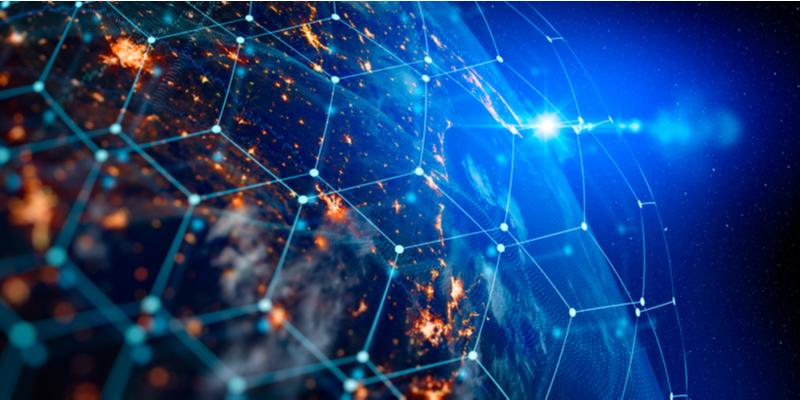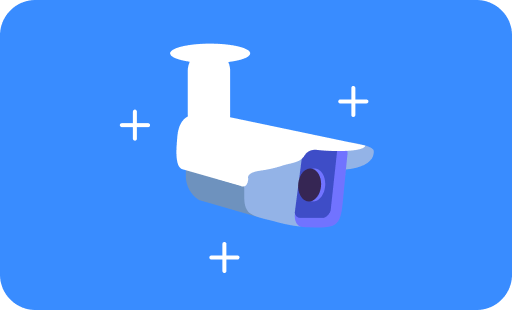The past, present and future of technology in physical security
- Physical security
- Technology

In our third Calipsa webinar, we brought three experts together to talk about the past, present and future of technology in physical security. We were joined by:
- Chris Carter Brennan - CEO and Founder, CONXTD Technologies
- Aria Kozak - CEO and President, Elite Interactive Solutions
- Pauline Norstrom - CEO and Founder, Anekanta Consulting
Missed the live webinar? You can still watch the full discussion below.
The past
We opened our discussion by going back to the millennium, when digital technology was first introduced to the security industry. Pauline Norstrom, who has 20 years’ experience in the industry, remembers that “the transition to digital recording was a significant moment for video surveillance. We saw a quantum leap forward in what could be done with image quality and record rate as a result of going digital.”
Security technology was built around embedded, dedicated hardware, but as the consumer world evolved, these technologies entered the security market, bringing whole new capabilities and functionality. Pauline continues, “As the consumer world moved forward, a lot of that technology came into the video surveillance market."
“When the mobile phone market developed, we got image sensor technology and improved communication networks. The gaming market brought us fast, effective, online centralised processing. There were improvements in silicon designed for computing, and now we’re seeing silicon that will run artificial intelligence very effectively. Finally, the increase in hard drive storage, and the speed and reliability of solid state storage means that users now have more choices for where they want to store their footage.”
Connectivity has also changed drastically over the years. Chris Carter Brennan, who has many years’ experience in the data communications industry, discusses the increasing speed of alarm transmission: “Back in the day, we were designing products around ISDN and PSTN network dial-up. ISDN was considered high speed back in the 90s - there was no broadband, everything was done on leased lines. So I’ve seen improvements in speed, reliability and mobility, in that order.”
While technology’s speed has improved how the security industry works, Chris also believes that its accessibility has helped enormously. “If you look back at the 90s and early 00s, you needed a big IT department in-house with experts you employed yourself. Whereas now, the cloud really allows you to access incredibly powerful technology, to access these unbelievable skills at a fraction of the price, on demand. The democratisation of tech has been a massive change.”
The present
New technologies have paved the way for whole new types of security. Aria Kozak has worked in the remote guarding sector for over 20 years, and technology has been critical to its success. He explains: “We’ve implemented and used a lot of technology over the years, particularly different types of AI. It was a work in progress, and often very challenging. Having technology that can filter out the noise of false alarms and allow us to focus on crime prevention has been paramount. Calipsa has had a monumental impact on the reduction of our false positives, so for businesses to stay relevant, technology is very important.”
For Pauline, false alarm filtering is not the only issue that security businesses have to contend with nowadays. With so many new technologies available, data processing is now a key area. “The cloud allows you to do anything, anywhere. This opens up access to many systems and many sensor inputs, so you’re processing lots and lots of information about things going on concurrently. This is far more than a human operator can actually process.”
Data is extremely valuable to businesses now, but many people are feeling the burden of data overload. So how do we solve the problem? Pauline continues: “Don’t reduce the amount of information. Instead, use AI that can find patterns in all that data and bring the right information to the right people at the right time. You might have diverse data sets, but the key is to focus the operator’s attention on the data that’s really important. This enables better decision making, so you’re increasing value across the chain, at every level.”
Chris agrees that while data is crucial to a successful modern business, so too are people. “In my company, we have designed our product around the data to make it easier for ARCs to do their job. But we need to give our own team access to the best technology, as well as our customers - because it’s the people you can’t replicate. We’re a fully cloud-based company and it’s the most efficient business I’ve ever run. You need good information at your fingertips and fantastic processing to do your job to the best of your ability.”
Automation has allowed many security businesses to transition from manned guarding to remote guarding. Aria explains how technology creates efficiencies for the better: “We can provide guarding that is faster, smarter and cheaper. There is a real benefit for our customers, because we focus on preventing crime, instead of being busy with noise, false positives and so on. Law enforcement appreciates this immensely too, because we have little to no false alarms and we work in real time. There are benefits all round, so clearly this is the future: leveraging technology, not for its own sake, but to find the right tools for the job. Which helps people to focus on what matters.”
Pauline concludes: “While there’s a lot of automation in this industry already, what’s important now is adding intelligence and learning to data. By making this process even better and more intelligent, you’ll see an increase in profit because it’s taking less time to process data and find meaningful information. It’s an upward trajectory, since people have worked out where they’re losing money, and using tools that deliver value in those areas. That value isn’t just financial, it’s a sense of wellbeing, the safety of your people, your reputation with your customers who have an emotional attachment to your offering. People can feel an improvement to their lives as a result of these solutions being used.”
The future
So where is technology headed next in the security industry? Are we going to see even more dramatic changes in the next decade? Pauline isn’t so sure. “Our industry moves slowly, and there’s a reason for that. Most security systems are attached to buildings - that’s usually what we’re securing - and the technology used in those buildings is robust, so those systems tend to stay in place for a long time. Eventually real estate will need to be upgraded, new buildings are built, and when that happens, that’s the time when the digitisation of security systems will really take hold.
“I can see a future where buildings have pre-fab security technologies already built in, so all the data coming out of those systems is digitised and harmonised. I think we’ve reached a point where the industry needs to collaborate to move forward: coming together to think about the art of the possible, moving data into the cloud, not fearing cyber security but instead setting the standard for it. When building security becomes digitised and less reliant on purely hardware systems, all those systems will need the capability to talk to each other and share data. So there’ll be a gravitation towards more cloud-based tech. Particularly because, if we continue to use AI to interpret data, establish patterns, and deliver useful, pertinent data, then these developments can only happen with cloud technology.”
Chris added: “Hardware is still a big element in security solutions. I don’t think we’ve reached a point where security specialists will be fully replaced by IT teams. It still needs a specialist to fit it and install it so it works most effectively, and I think hardware will remain important to us as service providers. However in the future, we’re going to transition into an industry selling software and services with less focus on the hardware. The data that the hardware can produce, and what business intelligence or risk management that provides, will become more important to the end user. When we move into service and software provision over hardware, I think we’ll also move into subscription-based solutions.”
Pauline agrees that the subscription model is likely to come to the fore in the future, as security firms move into the software-as-a-service space. “Before, successful installers made profit on hardware that required very little maintenance. This dynamic caused inertia in the market. Too many distributors were undercutting each and eroding margins. Moving into a subscription-based, value-add model will provide better service to end users, and is much more profitable to installers than one-off sales in the long run.”
Aria’s business moved to a subscription model three years ago, “and it’s worked very well for us. We’re staying away from selling new hardware all the time. Security is a great industry, but it’s very slow to embrace new technology. You’ve got to reinvent yourself. I see equipment getting smaller, faster and cheaper. AI will play a major role in the future, too. I’ve been living and breathing it for the last ten years and now it’s finally coming together. I appreciate and welcome businesses like Calipsa coming and thinking out of the box. I’m upbeat about the future - I think there are a lot of big changes to come.”
Thanks again to our panel for a really insightful discussion. If you’d like to watch the full webinar, follow the link below.








No comments